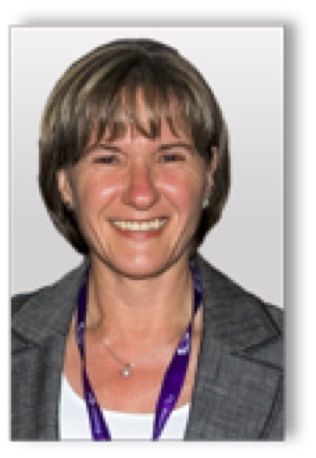De-risking exploration and development with realistic 3D geologic modeling, geophysical seismic simulation, and imaging
OR

Format: Virtual Webinar. 45 min. presentation followed by 15 min. Q&A
Please note that two sessions will be given at different dates listed below.
Session 1 (in English), Wednesday, September 4, 2019, 9 am to 10 am Mexico City time (9 am to 10 am, US Central Time) Completed
Session 2 (in Spanish), Wednesday, October 23, 2019, 2 pm to 3 pm Mexico City time (2 pm to 3 pm, US Central Time) Completed
Two live sessions are completed. Please view the videos from the recordings below.
About the Course
SEG members, view the course for free!
2019 SEG Virtual Honorary Lecture Latin America. Seismic full wave-equation modeling has no dip limitations, produces all the events associated with the wave equation, and offers the advantage of getting recorded on real scale Earth models compared to physical models. Marmousi model (Versteeg and Grau, 1991 and Versteeg, 1994), for a while, it was the model presenting the most complex structure, and it was used for testing most recent technologies, like FWI. This model alone is an example of the large benefit provided by seismic simulation of realistic or quasi-realistic models. The advantage of synthetic seismograms computed with finite-difference approach to support interpreters in areas with complex subsurface geometries was presented by Kelly et al. (1976), including the vision of using a modeling approach in an interactive computer environment.
The improvement of subsurface image will not be achieved by accessing technologies developed without considering realistic geology, topography, rock and reservoir properties plus fluid contents or just tested on simplified models. Reduction of uncertainties will be achieved when developed technologies get stressed with simulated data obtained from realistic a priori known complex earth model.
In this lecture, I will review and illustrate the challenges and approaches applied when building complex marine and land models that should generate synthetic seismograms comparable with field recorded seismograms, to de-risk seismic acquisition and imaging, not only for exploration purposes, but also when monitoring a reservoir under production.
One of the main challenges in this process is the proper selection of geo-elements, rock properties and their distribution and positioning in a tridimensional space at real scale. Another challenge is the verification of the numerical modeling for seismic simulation. Critical steps are the calculation of adequate acquisition design followed by synthetic seismogram verification against field data and finally the verification of migrated seismic image.
I will discuss how modeling evolved from representing isotropic media to anisotropic and more recently to elastic. I will also cover how the industry found the need of creating models to understand the seismic response of a reservoir under production scenarios.
I will review how the acquisition of synthetic seismograms evolved from being computed with finite-difference approach to finite-element and how imaging technologies were and are challenged by simulated data obtained from realistic 3D models.
Finally, I will comment on my expectations in the usage of realistic 3D modeling and advanced seismic simulation in the daily activities of the oil and gas industry. For instance, static and dynamic simulation are used daily for good reservoir and field management.
Your Instructor

Gladys Gonzalez has 28 years of professional experience in the oil and gas industry. She has worked for major international companies, service organizations, and consultancy.Since 2016, she has been Executive Geophysical Advisor at V&G Exploration, Inc., USA, working with clients all over the world. Gonzalez oversees seismic data analysis, interpretation, and geophysical validation for qualitative and quantitative aspects of exploration and development projects.
Gonzalez, who was born and brought up in Argentina, graduated in 1986 from Universidad Nacional del Sur with a BSc degree in Geological Sciences.
She moved from academia to the private sector in 1990, joining Western Geophysical where she worked in seismic data processing in different roles. Gonzalez also was employed at Geco-Prakla-Schlumberger and CGG, implementing all the latest technologies for seismic processing and imaging for land and marine projects in South and North America. In 2000, Gonzalez joined Paradigm Geophysical, as Senior Geoscience Technical Advisor for depth imaging, velocity modeling, and seismic inversion. In 2007, Gonzalez became the Emerging Technology leader at Paradigm, focusing on ES360 imaging- wide-azimuth anisotropic depth-imaging applications for deep water exploration. In 2009, she moved from the service sector to E&P company Repsol as Geophysics Research and Innovation Manager. In this role, she focused on developing proprietary technologies including advance imaging from elastic RTM to wave-based de-migration, customized illumination for survey designs, advance seismic attributes, and geobody detection via machine learning.
Gladys is a member of EAGE, SEG, GSH. She has been active in professional societies during her career.
She was vice-chair of the SEG Advanced Modeling Corporation (SEAM) Board of Directors in 2017 and was chair of the SEAM Phase II Management Committee, the industrial consortia project focused on land seismic challenges (including unconventional, arid, and foothills models), from January 2012 to February 2016.
Gonzalez has co-authored a number of technical papers and made many technical presentations at international oil and gas conventions. She also has organized workshops focused on advance seismic simulation in different regimes, seismic imaging and reservoir characterization on complex thrust-belt land environments, and prestack interpretation.
Gladys was elected to the EAGE (European Association of Geoscientists and Engineers) Board in 2011. She is EAGE past president 2013–2014 and was the first woman president of this professional association founded in 1951.She founded EAGE Women in Geoscience & Engineering, and Young Professionals Special Interest Communities (WGE & YP SIC) in 2013. Currently, she is the vice-chair of the EAGE Awards Committee.
